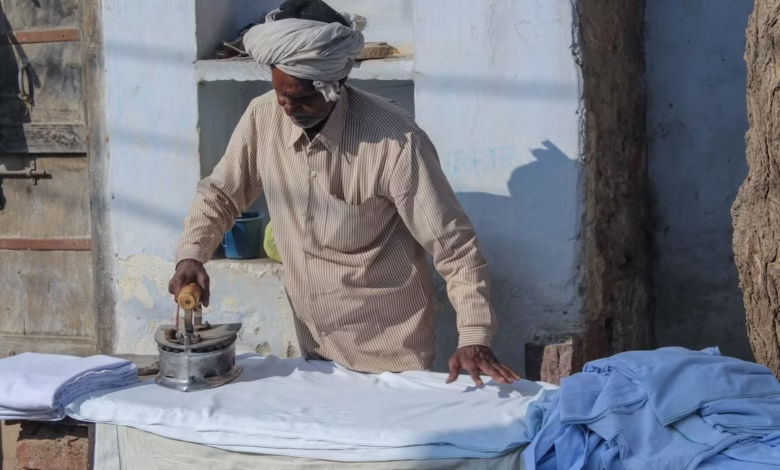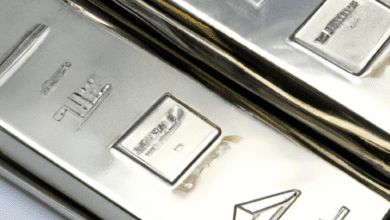Exploring Ferrous Metals: Insights into Iron and Steel Production, Markets, and Sustainable Recycling Practices

In the ever-evolving landscape of materials science, ferrous metals, primarily iron and steel, play a pivotal role in shaping industrial and construction applications. As the backbone of numerous sectors, from automotive to aerospace, these base metals are indispensable in the creation of robust structures and advanced technologies. This article delves into the multifaceted world of ferrous metals, exploring their production processes, current market dynamics, and the crucial aspect of metal recycling. We will begin by understanding the fundamental characteristics of ferrous metals and their significance in various industries. Next, we’ll analyze the economics of iron and steel production, examining market trends and the increasing importance of sustainable practices in metallurgy. Finally, we’ll highlight innovations in metal recycling, showcasing how both ferrous and non-ferrous metals are being repurposed to foster a greener future. As we navigate through these topics, we will also touch on the broader context of metal commodities, including precious metals like gold and silver, as well as critical materials such as lithium and platinum. Join us on this exploration of the metal industry and discover how ferrous metals continue to influence our world while paving the way for sustainable metal production and fabrication.
- 1. Understanding Ferrous Metals: The Backbone of Industrial and Construction Applications
- 2. The Economics of Iron and Steel Production: Markets, Trends, and the Role of Metal Recycling
- 3. Sustainable Practices in Metallurgy: Innovations in Ferrous and Non-Ferrous Metal Recycling and Fabrication
1. Understanding Ferrous Metals: The Backbone of Industrial and Construction Applications
Ferrous metals, primarily comprising iron and steel, play a crucial role in various industrial and construction applications, making them the backbone of modern infrastructure. These metals are characterized by their magnetic properties and high tensile strength, which make them indispensable in the production of a myriad of metal alloys used across multiple sectors.
Understanding ferrous metals begins with iron, often regarded as one of the most abundant base metals found in the Earth’s crust. Iron is primarily extracted through metal mining processes, where it is separated from its ore. The production of steel, an alloy of iron, involves adding carbon and other elements to enhance its properties, making it essential for construction metals, automotive metals, and aerospace metals. This versatility is a significant reason why steel is often considered the most recycled metal globally, contributing to sustainable metal production practices.
In comparison to non-ferrous metals, such as aluminum, copper, and zinc, ferrous metals are heavier and generally less resistant to corrosion. However, advancements in metallurgy have led to the development of various corrosion-resistant alloys, which are increasingly used in construction and energy sectors. The rise of metal recycling initiatives has also spurred interest in the sustainability of ferrous metals, allowing industries to reduce waste and minimize environmental impacts.
As metal trends evolve, the focus on recycling ferrous metals is becoming more prominent, driven by the demand for eco-friendly practices in metal fabrication and construction. Additionally, the integration of 3D printing technologies in manufacturing processes is opening new avenues for the use of ferrous and other metals, enabling the production of complex structures with less material waste.
In conclusion, ferrous metals are vital to the global economy, influencing not only the construction and automotive industries but also shaping the future of metal commodities, including precious metals like gold and silver investing. Their ongoing development and adaptation in response to market needs and environmental considerations underscore their importance in the industrial landscape.
2. The Economics of Iron and Steel Production: Markets, Trends, and the Role of Metal Recycling
The economics of iron and steel production play a critical role in the global market, driven by a variety of factors including demand, supply chains, and advancements in metal recycling. Iron and steel are among the most significant ferrous metals, forming the backbone of numerous industries such as construction, automotive, and aerospace. As the demand for sustainable metal production increases, the role of metal recycling becomes paramount in addressing economic and environmental challenges.
Markets for iron and steel are influenced by trends in industrial metals and the growing necessity for sustainable practices. For example, the construction sector relies heavily on steel and other base metals, impacting prices and availability. Increasing construction activities often lead to higher demand for these metals, subsequently affecting market dynamics. Moreover, the rise of 3D printing metals introduces innovative methods of metal fabrication, which can reduce waste and enhance production efficiency.
The integration of metal recycling into the production process not only helps mitigate metal corrosion but also significantly reduces the need for virgin metal mining. Recycling ferrous metals such as steel can lower energy consumption and greenhouse gas emissions, making it an essential component of sustainable metal production. This shift towards recycling aligns with market trends emphasizing eco-friendly practices.
Furthermore, the interplay between ferrous and non-ferrous metals, alongside precious metals like gold and silver, shapes investment trends in the metal commodities market. Investors are increasingly looking at gold investing and silver investing not just for their value but also for their role in supporting sustainable practices within the mining industry. The recycling of metals such as aluminum, copper, and zinc can also provide alternative sources that lessen dependency on rare earth metals and other mined resources.
In summary, the economics of iron and steel production are deeply intertwined with market demands, evolving trends in metallurgy, and the essential role of metal recycling. As industries seek to adopt more sustainable practices, the importance of these ferrous metals continues to grow, influencing both market dynamics and investment strategies in the metal commodities landscape. The transition towards a circular economy in metal production will likely lead to more resilient markets and innovative practices that benefit both the economy and the environment.
3. Sustainable Practices in Metallurgy: Innovations in Ferrous and Non-Ferrous Metal Recycling and Fabrication
Sustainable practices in metallurgy are becoming increasingly vital as the demand for both ferrous and non-ferrous metals continues to rise. Innovations in metal recycling and fabrication are essential for reducing environmental impacts and conserving natural resources. The recycling of metals, particularly industrial metals like steel and aluminum, not only minimizes waste but also reduces the energy required for metal production.
One of the most significant advancements in sustainable metal production is the development of more efficient recycling processes. For instance, the recycling of ferrous metals often involves the use of electric arc furnaces, which can operate with up to 75% recycled content, significantly lowering greenhouse gas emissions compared to traditional blast furnaces. Innovations in sorting technologies, such as advanced sensors and artificial intelligence, have also improved the quality of recycled materials, making them more competitive with virgin metals.
In the realm of non-ferrous metals, such as copper, zinc, and lithium, sustainable practices are equally important. The rise of battery metals, particularly lithium and cobalt, has spurred innovations in recycling methods that recover these precious resources from old batteries. This not only supports the growing demand for energy metals in electric vehicles and renewable energy storage but also mitigates the environmental impact associated with metal mining.
Moreover, the implementation of 3D printing technologies in metal fabrication is revolutionizing how metals are used in various industries, including aerospace and automotive sectors. This technique allows for the creation of complex metal alloys with reduced waste, enabling more sustainable production methods. By using only the material needed for a specific part, manufacturers can significantly decrease the overall consumption of base metals and precious metals, paving the way for more eco-friendly practices.
Lastly, as markets for metal commodities continue to evolve, awareness around sustainable practices is crucial. Investors are increasingly considering the environmental impacts of their investments in precious metals, such as gold and silver, leading to a higher demand for sustainably sourced and produced materials. As the industry moves toward greener solutions, the future of metallurgy will likely see a continued focus on sustainable practices that promote responsible metal recycling and innovative fabrication techniques.
By embracing these sustainable practices, industries can not only contribute to environmental conservation but also enhance the efficiency and profitability of metal production, establishing a more sustainable future for metallurgy.
In conclusion, the significance of ferrous metals, particularly iron and steel, cannot be overstated in the context of modern industry and construction. As we have explored, these base metals serve as the backbone for a myriad of applications, from infrastructure development to automotive manufacturing. The economics of iron and steel production reveal a dynamic market influenced by global trends and the increasing importance of metal recycling. By embracing sustainable practices in metallurgy, we can innovate the recycling and fabrication processes of both ferrous and non-ferrous metals, leading to a more eco-friendly approach to metal production.
With the rise of green technologies and the demand for sustainable metal practices, industries are now more than ever looking to improve metal recycling methods and reduce metal corrosion. This not only benefits the environment but also enhances the longevity and efficiency of metal commodities. As we move forward, the integration of advancements in 3D printing metals and the exploration of rare earth metals will be crucial in diversifying our metal supply chains, particularly in aerospace and energy sectors.
Investors should keep an eye on market trends related to gold investing, silver investing, and the growing sectors of battery metals like lithium, as these will play a pivotal role in shaping the future of metallurgy. Ultimately, a commitment to sustainable metal production will ensure that ferrous metals continue to meet the demands of modern society while paving the way for innovative applications in construction, automotive, and beyond.
References:
– [Insert relevant references here]





